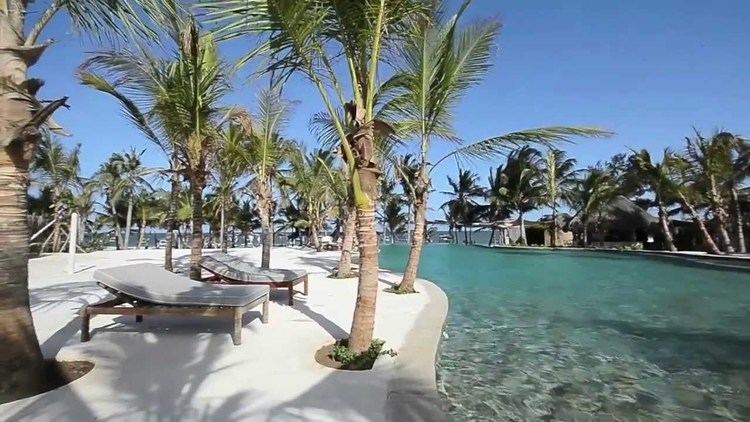Founded 13th – 14th Century Time zone EAT (UTC+3) Local time Sunday 10:40 AM Neighborhoods Msabaha, Mere, Barani | Re-settled 1861 Population 207,253 (2009) Number of airports 1 | |
 | ||
Weather 32°C, Wind SE at 18 km/h, 68% Humidity Points of interest Malindi Marine National, Ruins of Gedi, Vasco da Gama Pillar, Marine Park, Coral Key Beach Resort | ||
Malindi weird tourist
Malindi (once known as Melinde) is a town on Malindi Bay at the mouth of the Galana River, lying on the Indian Ocean coast of Kenya. It is 120 kilometres northeast of Mombasa. The population of Malindi was 207,253 as of the 2009 census. It is the largest urban centre in Kilifi County.
Contents
- Malindi weird tourist
- Map of Malindi Kenya
- Made it to the coast nairobi to malindi kenya road trip travel vlog 09
- Overview
- History
- Local governance
- References
Map of Malindi, Kenya
Made it to the coast nairobi to malindi kenya road trip travel vlog 09
Overview
Tourism is the major industry in Malindi. The city is exceptionally popular among Italian tourists. Malindi is served with a domestic airport and a highway between Mombasa and Lamu. The nearby Watamu resort and Gedi Ruins (also known as Gede) are south of Malindi. The mouth of the Sabaki River lies in northern Malindi. The Watamu and Malindi Marine National Parks form a continuous protected coastal area south of Malindi. The area shows classic examples of Swahili architecture. The majority of Malindi's population is Muslim.
Malindi is home to the Malindi Airport and Broglio Space Centre.
History
The first written reference to the present day Malindi likely comes from Abu al-Fida (1273–1331), Kurdish geographer and historian. He wrote that Malindi is situated to the south of the mouth of the river, which begins in the Mountain of Comr hundreds miles away. This mountain may be Mount Kenya, where Galana River originates. Therefore, Malindi has existed as a Swahili settlement since the 13th century.
Once rivalled only by Mombasa for dominance in this part of East Africa, Malindi has traditionally been a port city for foreign powers. In 1414, the town was visited by the fleet of the Chinese explorer Zheng He. Malindi's ruler sent a personal envoy with a giraffe as a present to China on that fleet.
The Portuguese explorer Vasco da Gama met Malindi authorities in 1498 to sign a trade agreement and hire a guide for the voyage to India, when he erected a coral pillar. Vasco da Gama was given a warm reception from Shiek of Malindi, which contrasted with hostile reception he encountered in Mombasa. The pillar stands to this day, though there have been calls by conservationists to take care of it, since soil erosion might make the pillar fall into the ocean. It is a fairly popular tourist attraction for both local and international tourists.
In 1498 Malindi was a prosperous town with population of about 6,000. The Arabs were the ruling class with many Africans as well as Indian traders living in the town. The main source of prosperity was export of ivory, rhino horns as well as agricultural products such as coconuts, oranges, millet and rice. In 1499 the Portuguese established a trading post in Malindi that served as a resting stop on the way to and from India. In 1509 they even established a factory (custom house) in Malindi, although it was abolished in 1512. Malindi remained the centre of Portuguese activity in the Eastern Africa until 1593 when Portuguese moved their main base to Mombasa. After that the town gradually declined until it almost disappeared by the end of 17th century. In 1845 Ludwig Krapf visited the town and found it overgrown by vegetation and uninhibited.
A Portuguese chapel with a graveyard dates from that era. It was built before 1542 when Francis Xavier visited the town. Many traditional buildings survive, including the Juma Mosque and palace on the beach, a stretch popular with tourists.
Malindi was re-founded by Sultan Majid of Zanzibar in 1861 and until the end of 19th century served as a slave trade centre. In 1890 Malindi came under the British administration, who abolished slavery. This human act led to a significant decline in agricultural production as it is depended heavily on slave labour. Outside agriculture there were only few industries in Malindi at the beginning of 20th century, among them are making mats and bags, crushing sesame seeds for oil and producing a Swahili drink called tembo. Malindi was officially made a town in 1903. Ten years later its population stood at around 1148 and included eight Europeans, 67 Asians, 230 Arabs and 843 Africans.
Malindi experienced a trade boom between the end of the World War I and 1925, when a famine occurred. The exports to foreign ports grew to £26,000 by 1924. Europeans started to return to Malindi in 1930s buying land from Arabs. Some of them like Commander Lawford opened the first hotels, which became the foundation of the future tourist industry. During the World War II Malindi was one of only two towns in East Africa bombed by Italians. This happened on 24 October 1940, and after this event allied troops were stationed in the town until the end of the war. After the World War II Malindi began developing into the modern day resort.
Local governance
Malindi now falls under Kilifi County as per the administrative changes in the new constitution passed in August 2010. Malindi forms a municipal council with the following thirteen wards: Barani, Ganda/Mkaumoto, Gede, Gede North, Gede South, Kijiwetanga, Madunguni, Malimo, Malindi Central, Malindi North, Maweni, Shella, Watamu Town. All of them are located within Malindi Constituency.
The mayor of Malindi is Mohamed Menza.
